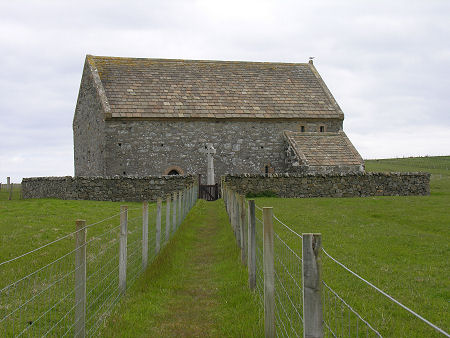 St Moluag's Church, Isle of Lewis |
Saint Moluag lived from 530 to 25 June 592. He was an Irish Saint who did much to promote Christianity among the Picts of what is today north and north-east Scotland during the 500s. The wider picture in Scotland at the time is set out in our Historical Timeline.
Moluag, who is also sometimes referred to as Lugaidh, Maol-luag, Molloch, Molluog, Molua, or Murlach, was born in the northern part of Ireland in about 530, making him a contemporary of St Columba. It is likely that his real name was Lugaidh (pronounced "Lua") and the form of Moluag, used in Irish Annals, was simply a familiar form: "Mo Luoc" or "my Lugaidh". In 562 Moluag and a following of Irish monks arrived on the Isle of Lismore in the mouth of Loch Linnhe. They established a religious community around a church towards the north end of the island. From there, Moluag and his followers moved across western Scotland, spreading the word and establishing around ten more churches. Among them were what is now St Moluag's Church in northern Lewis and others on Skye, Raasay, Tiree, Mull, Morvern and at Inveraray.
St Moluag then established a new religious centre at Rosemarkie on the north shore of the Moray Firth, and again set out with his followers to establish daughter churches wherever the resident Picts seemed receptive. Having done that, he moved on again, setting up the third of his great centres at Mortlach, on the edge of what is today Dufftown. This time his missionary work resulted in churches being established in places as widely spread as Migvie and Tarland in Aberdeenshire and Alyth in Perthshire.
St Moluag is said to have died on 25 June 592, though the circumstances and location of his death have been the subject of some controversy: by some accounts he was visiting the church at Ardclach eight miles south of Nairn when he died. Others say he died in Rosemarkie, where he does seem to have been buried. St Moluag's great staff or Bacchuill Mór, a blackthorn stick 34 inches long, survives in the care of the Livingstone family on the Isle of Lismore.
